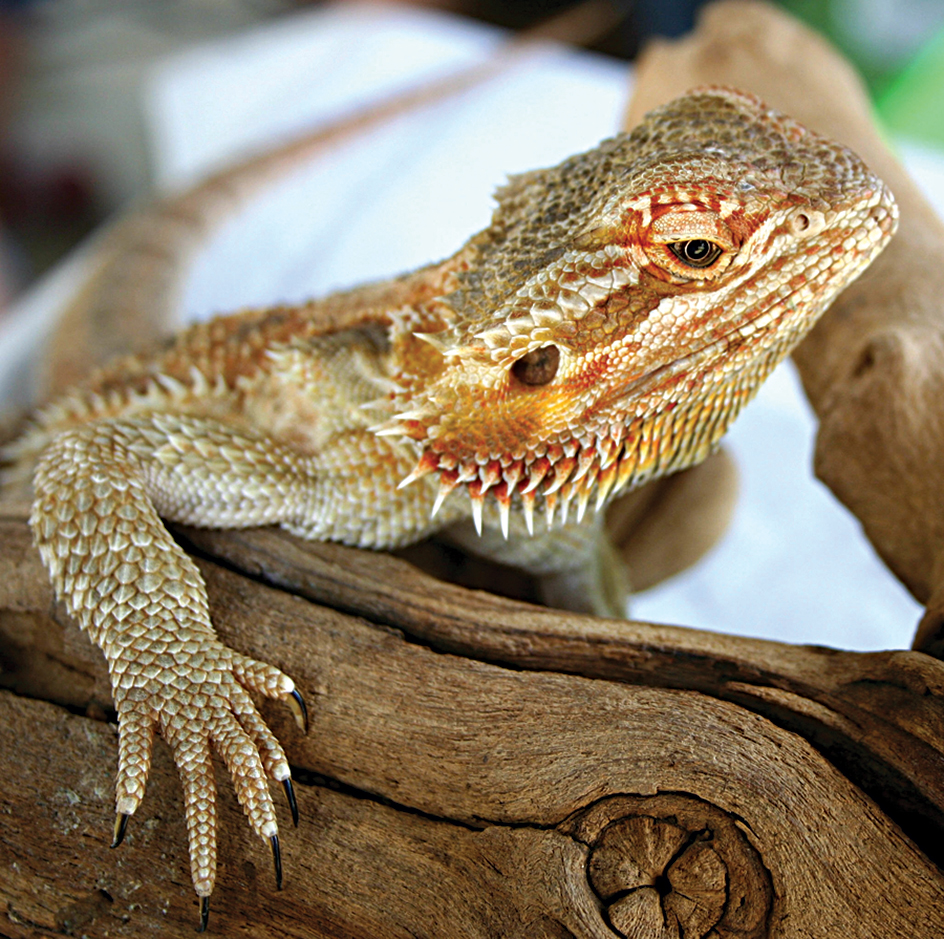Bearded dragon is an Australian lizard with an inflatable throat pouch. The throat pouch is covered in spiky scales that stand up when the pouch is inflated. This “beard” gives the dragon its name. There are several species (kinds) of bearded dragons. The lizards are popular pets, especially the central bearded dragon.

Bearded dragons have blunt, arrow-shaped heads and spikes along their sides. They grow 1 to 2 feet (30 to 60 centimeters) long. Males are generally larger than females. Dragons range in color from tan to brown to gold to red. This coloring matches the soil where they live. They also can lighten or darken their skin in only a few minutes.
Bearded dragons are native to Australia. Their environment includes dry woodlands and rocky deserts. The dragons control their body temperature by changing their color and behavior. They darken and flatten their bodies to warm in the sun. They lighten and climb bushes or burrow into the ground to escape the heat.
Bearded dragons eat both animals and plants. They hunt mostly insects and other small animals. They are eaten mainly by other lizards, snakes, and birds of prey.
Bearded dragons use body signals to communicate. When threatened, they inflate and darken the throat pouch. They submit to other dragons by raising a front leg and waving it in circles. Other signals include bobbing the head, gaping the mouth, and swishing the tail.
Females lay as many as 24 eggs in a burrow, up to nine times a year. The eggs hatch in 50 to 70 days. Bearded dragons live for up to 15 years.
